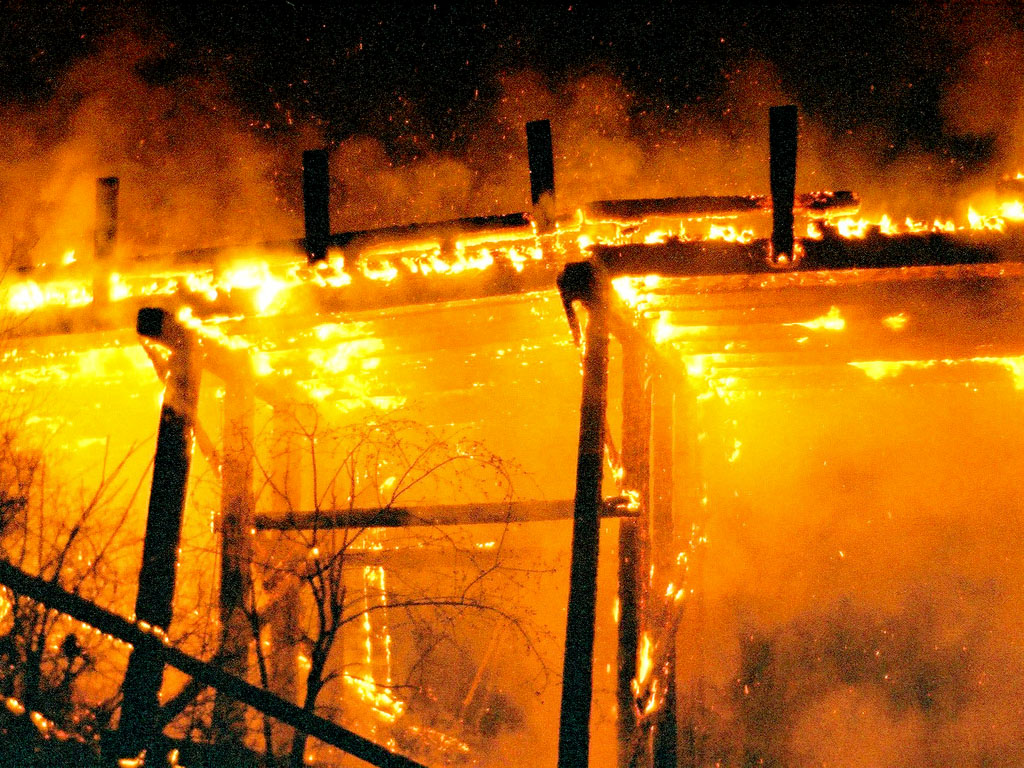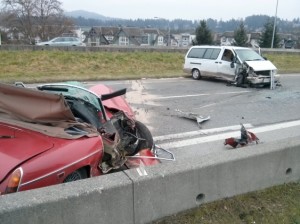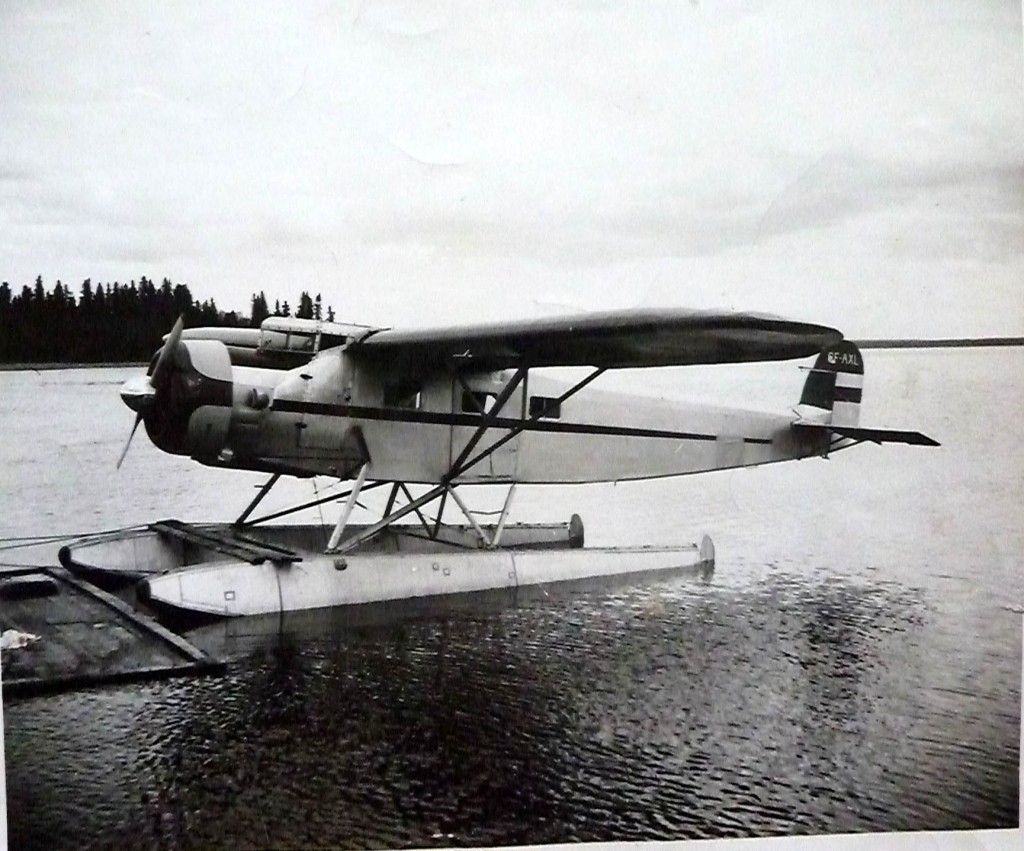Relish Tea Room in Mana, New Zealand
“Living your Dreams” is a theme that often appears on many Facebook posts, so Lynn and I are always looking for shining new examples. On our way down the West side of the North Island we stopped for tea at a picturesque little English style ‘tea room’ called the Relish Café. Located in Mana (just north of Wellington) we were met by Allan and Anne McNair, Allan being a brother of our friend, Gill Russell, (see previous Rotorua post). There we shared a few life stories over afternoon tea.
Once again, we found ourselves chatting with a couple who made a complete life change. Only a few years back, the McNairs were running a successful saddlery store which provided a comfortable income and a high degree of security for over 25 years. In addition, Allan was an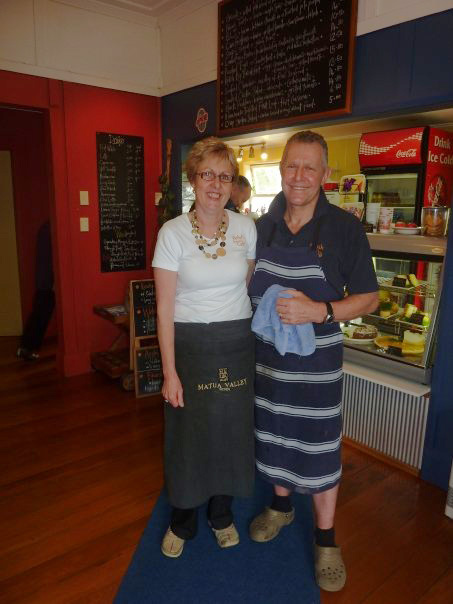 experienced ferrier. Their two daughters were just finishing school and would soon be off establishing lives of their own.
experienced ferrier. Their two daughters were just finishing school and would soon be off establishing lives of their own.
A few years back, Allan began feeling the need for change – not that he was dissatisfied with his life, it was, after all, a very good life. He just wanted a new challenge and one of his dreams was to run his own restaurant. When he shared his dream with his family his oldest daughter laughed and pointed out: “Dad, you can’t even boil an egg”. Allan reluctantly conceded that point, but was quick to state: “Well then my dear daughter, I will learn.” And, over the next five years learn he did. He and Anne continued to run their saddlery and ferrier businesses, but one day each week Allan worked a full eight hour shift in a local restaurant.
Over the five years of working part time he learned what he thought he needed to know and between them the couple were ready to strike off on their own. They found a lovely little establishment in Mana (just north of Wellington) that was exactly the kind of place they had dreamed about. About one block of the highway, just accross the main South Island Railway was a small restaurant with seating for about thirty-five. A former cottage, the tables were divided into three medium sized rooms. The period furnishings gave each room a cosy warmth and the entire “cottage” was surrounded by a delightful “English Country Garden” just coming into bloom when Lynn and I arrived.
When the deal was finalized, the saddlery business was sold and the family was off on a new life adventure.
(385)
Caledonia – Dark Days for Canadian Law Enforcement
Burning the Bridges of Canadian Justice
Homes were damaged or destroyed, public and private property destroyed, businesses bankrupted, ordinary citizens intimidated, threatened, attacked and one man left for dead with permanent brain damage, families torn apart, careers ended and, as a final insult, those same citizens, while trying to defend themselves, became the subjects of police “enforcement”. (the Image Gallery at the end of this post provides a solid visual of these events)
The Rape of Caledonia
Those who have read my posts, particularly in the Editorial Section, will know I am passionate about many subjects. Although I was a policeman for 30 years, you will also know I have never backed away from critizing the police when I believed the criticism was warranted.
A few months back, I made the mistake of reading a book titled: Helpless: Caledonia’s Nightmare of fear and anarchy, and how the law failed all of us” by Christi Blatchford. Blatchford, a respected journalist for both the National Post and Globe and Mail, spent many months researching, documenting and writing on the reign of terror that engulfed the good citizens of Caledonia. You might think these things only happen in some war torn country fighting a vicious dictator, but you would be wrong and in Canada, Caledonia was that place.
(2387)
My Tim Hortons Morning Posts January 2012
Tim Hortons Posts for January 2012
January 31, 2012 The Threat of Social Media
In the 21 Century, the greatest threats Facebook, Twitter, other social media and blog sites present, is not the invasion of the privacy of individuals using those sites, but as a tool to ‘out’ the efforts of governments and giant corporations attempting to keep their dubious dealings secret and, in the worst case, of dictators trying to control entire populations. This was no better demonstrated than in the events surrounding the Arab Spring which, to this day, continues to build across the Middle East.
Social media presents an unparalleled opportunity for individuals to co-ordinate and communicate their concerns about abuses by government and corporations that once held information tightly in the vaults of secretive government agencies and in the board rooms of corporations. Insider information and leaks today can be broadcast around the world in a matter of seconds. Wikileads is a good example.
Over the coming months and years you will see governments and corporations around the world working hand in hand to pass laws that control information they consider proprietary to their vested interests. The recent attempt to close down social media sites because information was passed along that was considered proprietary, is a perfect example. It did not take long before the US Government backed off once the backlash began.
Also, you likely watched as governments around the world become apoplectic during after the most recent WikiLeaks release. They are still pursuing Julian Assange with a vengence and arranged to have several organizations cut off Wikileaks services. Yesterday seveal hackers turned the tables on some spy agencies and hacked into some very sensitive conversations about those very hackers.
Worry not about what you post (other than that which may come back to haunt you at some future date) being accessed by some inept individual or pervert or even a government, worry about your ability to freely communicate your idea’s with others. Except to fight against network posts or internet displays that cross the bounds of common decency or are clearly racist, fight censorship at every turn.
January 31, 2012 Hackers, Snoopers and Peepers
(565)
San Remo Restaurant Burglary
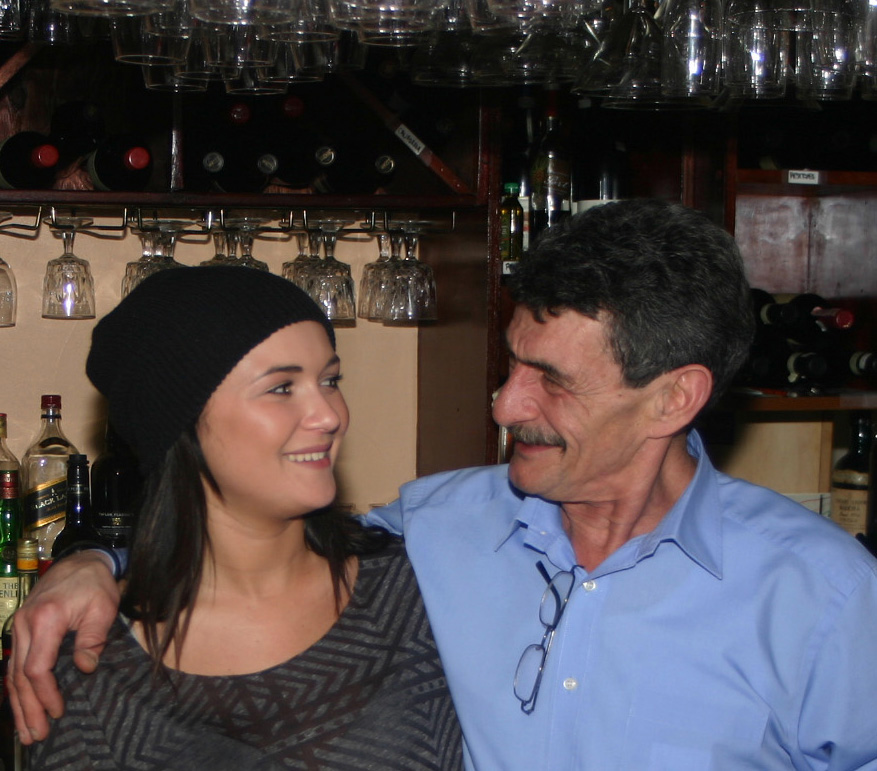
The San Remo Restaurant on Quadra at Hillside, has been a fixture in
Victoria for nearly 30 years. With an array of authentic Greek dishes as well Italian and American favourites, the warm and welcoming atmosphere provided by Dino, his daughter Zoi and the friendly staff makes a visit well worthwhile and repeat visists a must (see photos at end of story).
Quiet Times
It was 2:00 am Monday as I sat in my patrol car at the corner of Foul Bay Road and Fort Street working on a vexing problem. The problem? Trying to stay awake. As usual at the end of a week-end, not a thing was happening throughout the city and the radio barely crackled. You could fire a rifle down Douglas Street or along Oak Bay Ave and never fear of hitting anyone. It was nice to have an interlude, but the challenge at 2:00 am was keeping the mind occupied and off the thought of sleep.
As I whiled away the time, another car would occasionally book off with a vehicle, but nothing of consequence. I reflected back upon those times when my friends Blake Green, a Victoria Police member, and his wife Joanne, lived just a few door’s from where I was parked. The coffee pot was always on and the door open, but not a 2:00 am. The Green’s had moved in a few years back and the street, Goldsmith, was now long gone as the houses were torn down to make way for a Seniors Housing Complex and the Oak Bay Recreation Centre.
(2661)
Police Pursuit
Post Updated, March 12, 2017
(Note: If you go to one of the links, please do an arrow return to the main story, as the post links feature is not creating a new tab)
While there are many factors that contribute to the decision of an officer to either continue or call off a pursuit, the accident in the above photo, which occurred on January 18, 2014, (Times Colonist News Report) might have been avoided had a police pursuit earlier in the day not been called off. The danger, of course, had the earlier pursuit continued, an equally tragic accident may have occurred. The police were caught in that “damned if you do, damned if you damned if you don’t” dilemma.
For a police officer in pursuit, the adrenaline rush is significant. If the pursuit ends in the arrest of a suspect, that person is well advised to mind their “p’s and q’s”. If they don’t, they could easily end up on the short end of a nightstick. It’s easy, in retrospect to criticize the police. however, the situation is more complicated. This aspect of police pursuit is discussed more fully in the reference paper noted at the end of this story.
This post was originally made a few years back and is being updated here.
Police Pursuit: Public Debate and
Department Policy
Introduction
The following short stories outline various cases of police pursuit, some humorous, but most having the potential to end in tragedy either during the chase or following the chase having been called off.
In cases that end in tragedy, with the driver or passenger of the pursued vehicle, a policeman or in the worst case, an innocent third party, being injured or killed, the media devolve into a feeding frenzy. From the police perspective, it is a tough call as there is seldom less than a few seconds to make a decision – to pursue or not to pursue. If the decision is to pursue, at what point should it be called off as being to dangerous?
Time of day, the amount of traffic, speeds involved, prior knowledge of the vehicle pursued as stolen or involved in a violent crime, and dozens of other factors all come immediately into play. Over the course of my career I was involved in several dozen high-speed pursuits the majority of which resulted in the arrest of the driver, but on occasion, when it became too dangerous to continue, the pursuit was terminated. On a few occasions, accidents resulted when either the suspect vehicle or my police car became involved in an accident.
(1598)
Who’s Accountable to Whom?
The following is reprinted from an article written by Michael Byers and appearing in The Tyee on January 26, 2012.
I reprint the sections in which the author Michael Myers discusses with a German colleague the Canadian Parliamentary system vis a vis that of the German Reichstag. For the full article link here:
A View from the Reichstag: Who’s Accountable to Whom?
During a coffee break, a constitutional law professor quizzed me about Canada: “Is it true that your government has been shutting down Parliament?”
“Only temporarily,” I replied, explaining that Canadian prime ministers are entitled to ask the Governor General to prorogue Parliament. Stephen Harper first did so in Dec. 2008, in order to avoid losing a fiscal vote and thus his government. He did so again in Dec. 2009, in order to avoid parliamentary scrutiny of documents relating to the practice of transferring detainees to possible torture in Afghanistan. In both instances, the Governor General granted his request.
Nevertheless, Harper’s actions caused concern at home and abroad. As The Economist magazine observed on the second occasion, “The danger in allowing the prime minister to end discussion any time he chooses is that it makes Parliament accountable to him rather than the other way around.”
 My German colleague seemed to share that view: “Didn’t the Canadian Parliament respond by declaring the government in contempt?”
My German colleague seemed to share that view: “Didn’t the Canadian Parliament respond by declaring the government in contempt?”
“Not exactly,” I replied. The contempt of parliament ruling came later, in March 2011, after the government refused to provide MPs with detailed cost estimates for its crime bills. And while no other government in the Commonwealth had ever been found in contempt, Harper cavalierly downplayed the importance of the ruling, saying: “You win some, you lose some.”
Indeed, his Conservatives won a majority in the election that followed, which suggests that most Canadians were not particularly bothered by the finding of contempt.
“The real surprise,” I explained, “is that Harper does not appear satisfied with the extensive powers that are normally available to a majority government.”
I tell my German colleague about the government’s practice of invoking closure, with a frequency never before seen in Canada, to prevent elected MPs from debating major legislation such as the omnibus crime bill and a bill that will add dozens of new seats to the Commons.
About how, increasingly, the government moves the business of parliamentary committees behind closed doors, so that it can conceal embarrassing documents and reject witnesses proposed by opposition parties without fear of public censure.
Warning, with a smile
Finally, I explain how the Federal Court ruled in Dec. 2011 that a bill to abolish the Canadian Wheat Board was illegal because it violated a statutory requirement to poll wheat farmers first. No matter: the government adopted the bill anyway.
This led Peter Russell, the doyen of Canadian constitutional law, to warn: “Canadians should understand that at stake here is not just a technical point of law, but the integrity of parliamentary government.”
At this point, a wry smile crosses the German professor’s face.
“Professor Russell is right,” he says. “It’s all about understanding. Here in Germany, we sometimes learn our lessons too late.
While we are certainly no where near being turned into a dictatorship and the current government could fall (and will likely fall) in the next election, it is possible that several precedents will have been set by the current government that will be hard to dismantle.
We should all be concerned when any of our governing parties choose to disregard the building blocks of our parliamentary system.
For Prime Minister Harper and the Conservatives, far to many blocks are being pulled from the foundation.
Harold McNeill
Reference: Who’s Accountable to Whom?
(720)
Fairchild 82: A Northern Work Horse
Above Photo (Family Archives): CF-AXL moored at a makeshift dock on Touchwood Lake, northeast of LacLaBiche (c1961). The photo was taken on a trip made by Hans Vanderflugt (my instructor) and I while flying out of Cold Lake, AB in the late 50’s and early 60’s.
Photo Below: Hans and Ruth Vanderflugt
(that photo has somehow delinked from the story)
February 20, 2012. After posting this story on February 2, 2012, a young man, Daniel Mahoney, of Vanair Aviation, in Refugio, Texas, happened to pick it up the link off the Web while searching for background on his stepfather Hans. Dan phoned to tell me, Hans Vanderflugt, co-owner of Vanair, had just been killed in a crash near Colorado a few days before I posted the story (more information in the footer).
This story is dedicated to the memory of Hans, who is survived by his wife, Ruth Hodge Vandervlugt of Refugio, Texas; one son, John Vandervlugt of Round Rock, Texas; one stepson, Billy Michelson of San Antonio, Texas; and a sister, Erna Fentener Van Vlissingen of Amsterdam, Holland.
The following book was recently published about the heroic flying adventures of Hans as he tavelled the world delivering sngle and twin engine aeroplanes.
Photo of Hans Vandervlugt (October 2011) on the book cover.
(Note: I misspelt the surname in the original post as that is what I had always listed in my log book.)
1. Bush Flying in Northern Canada
At 6:00 am, I was out of bed and heading to the dock on Beaver Lake, about four miles east of LacLaBiche, Alberta, where Axle, the nickname for the Fairchild 82A, CF-AXL, was moored. The aircraft was one of the final two members of the Fairchild Series1 of bush planes built in the 1930s by Fairchild Aircraft Ltd. Canada, and still in service. Although not slick or fast, it was a workhorse in which we could haul up to 2000 lbs depending on how much fuel we had to carry.
On shorter trips (thirty to forty-five minutes) we only carried sufficient fuel for one or two round trips as each pound of fuel meant a pound less cargo. This particular aircraft had travelled to almost every corner of Northern Central and Western Canada, whereever pioneers were working to access the vast array of natural resources hidden among the millions of acres of wilderness rocks, trees, shrubs and thousands of freshwater lakes, rivers and streams that defined the north.
Production of the 82A was discontinued when the factory switched to cargo supply and bomber aircraft needed to help fight the Second World War. The Bristol Bolingbroke and the C-19 Packard were the most recognized aircraft being poured out of the Fairchild Factory in the 1940s. Unfortunately, the production of the 82A series was never resumed as the plans and molds were inadvertently destroyed during the company’s transition to wartime aircraft.
CF-AXL, the aircraft we flew back in the 1950’s and 60’s, currently resides in the Canadian Aviation and Space Museum in Ottawa. It was refurbished and moved to the museum in the 1960’s shortly after we flew it when working for a company owned by the father of a High School friend, Aaron Pinsky (lead photo in the link – top left (Aaron), bottom centre (Harold and Aaron, two cool dudes). We completed our flying training at RCAF Station Cold Lake and regularly flew together during the early years.
2. Early Mornings
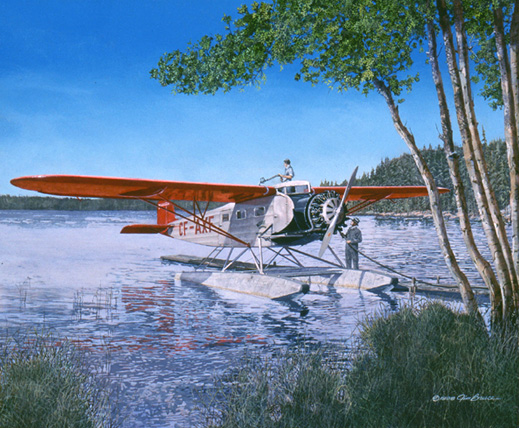 On this morning I was suffering a bit of a headache after hanging out a little too late with friends, the Gatzke’s, with whom I lived while attending grade five in LacLaBiche some ten years earlier (Link). On other flights, I had also made friends with several others who put me up while on layovers in LacLaBiche.
On this morning I was suffering a bit of a headache after hanging out a little too late with friends, the Gatzke’s, with whom I lived while attending grade five in LacLaBiche some ten years earlier (Link). On other flights, I had also made friends with several others who put me up while on layovers in LacLaBiche.
Photo (Painting of AXE by Jim Bruce, Aviation Artists, Web Source): This, the only other 82A in service in Canada, is shown being refuelled while moored to a small dock somewhere in Northern Canada. AXE disappeared in 1964 while on a flight in the Northern Arctic. Link to the story. Note the slide back access to the upper wing from the cockpit. That little door made accessing the fuel tanks much easier (there is also another photo attached to end of story). I can still remember the distinct smell of aviation fuel as we added fuel two or three times a day. We never carried more fuel than necessary as the weight of every extra gallon of fuel had to be subtracted from cargo.
By 6:30 Hans Vanderflugt, the Chief Pilot for Alberta Fish Products and I, had pumped the floats and topped up the gas, both accomplished with an ‘arm killer’ toggle pumps. Well, stating it was ‘Hans and I’ was generous as he usually let me do the toggle work while he held the hose. I never complained though as I was more than happy to be getting ‘free’ flying lessons as I built hours towards my Commercial Licence. If I had to do a little pumping, then fly twenty minutes, load 2000 pounds of fish, fly another twenty and unload it, it was a small price to pay for this kind of flying time.
Once I had completed the external and internal checks, then started the engine, Hans would cast off, jump into the co-pilots seat. We would taxi into the bay for our first flight of the day. Today, however, was to be different.
(6113)
Christchurch: The Gateway to Antarctica
Following in the footsteps outlined in Shackleton’s Forgotten Expedition, Lynn takes the controls as we head north along McMurdo Sound toward our Winter Quarters below Mount Erebus.
Five weeks and 5000 kilometers later, the final countdown for our time in New Zealand has finally arrived. We would have liked to stay longer but, due to a ticketing problem in our planned departure from Sidney Australia, we had to take a defined departure date. To make a change at this late date would have been far to expensive.
Our last few days are spent traveling up the East Coast from Invercargill through Dunedin where we visit the Lloyd family (Kim, the oldest daughter of our friends, David and Gill, and Kim’s husband Hywel and their two children – pictured in Rotorua story). After a short, but wonderful visit, we again head north along the coast toward Christchurch, making several stops along the way.
In scanning the slideshow you will note a group of amazing rocks, the Moeraki Boulders that look like giant cannonballs. Located at Koekohe Beach along a short stretch of the Otago coast, these boulders were formed millions of years ago in the Pleistocene era and only after millions of years of erosion have they made a surface appearance. Each decade more rocks have become exposed and it appears this is the only area in the world where these unique rocks can be found.
(329)

